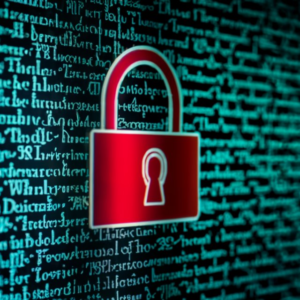In the digital age, ransomware attacks have become a significant threat to various sectors, with the Healthcare and Public Health (HPH) sector being particularly vulnerable. One of the emerging threats in this space is Mauri9870 ransomware. This article provides an in-depth analysis of Mauri9870 ransomware, its tactics, techniques, and procedures (TTPs), and how organizations can protect themselves. We aim to deliver comprehensive, easy-to-understand content to help individuals and organizations safeguard their critical data.
What is Mauri9870 Ransomware?
Mauri9870 ransomware is a type of malicious software designed to encrypt files on a victim’s system, rendering them inaccessible until a ransom is paid. This particular strain targets organizations in the Healthcare and Public Health sectors, aiming to disrupt essential services and coerce payments from institutions that handle sensitive data.
Key Characteristics:
- Encryption: Encrypts files and demands a ransom for decryption.
- Targeting: Specifically focuses on healthcare institutions and public health entities.
- Impact: Can cause significant disruptions, impacting patient care and administrative functions.
How Does Mauri9870 Ransomware Operate
Understanding how Mauri9870 ransomware operates is crucial for developing effective defenses. Here’s a breakdown of its typical lifecycle:
1. Initial Infection
Mauri9870 ransomware often enters a system through phishing emails, malicious attachments, or compromised websites. Attackers use social engineering tactics to trick users into executing malicious payloads.
2. Lateral Movement
Once inside the network, the ransomware spreads laterally to other systems, exploiting vulnerabilities and weak security protocols to expand its reach.
3. Encryption Process
After gaining sufficient access, Mauri9870 begins encrypting files on the infected systems. It typically uses strong encryption algorithms, making it difficult for victims to recover their data without the decryption key.
4. Ransom Note
The ransomware leaves a ransom note, usually in the form of a text file, detailing the payment demands and instructions. The note may also include threats of permanent data loss if the ransom is not paid within a specified timeframe.
5. Ransom Payment
Victims are instructed to pay the ransom, often in cryptocurrency, to receive a decryption key. However, paying the ransom does not guarantee that the attackers will provide the key or that the system will be fully restored.
Tactics, Techniques, and Procedures (TTPs) of Mauri9870 Ransomware
Tactics:
- Exploitation of Vulnerabilities: Mauri9870 ransomware takes advantage of known vulnerabilities in software and systems to gain initial access.
- Social Engineering: The ransomware often relies on social engineering tactics, such as phishing emails or fake software updates, to trick users into initiating the attack.
- Credential Harvesting: It may use stolen credentials to access more systems and networks, increasing the scope of the attack.
Techniques:
- File Encryption: Uses robust encryption methods to render files inaccessible.
- Command and Control (C2) Communication: Communicates with external servers to receive commands and exfiltrate data.
- Lateral Movement: Moves laterally within the network to encrypt additional files and systems.
Procedures:
- Deployment of Ransomware: Drops the ransomware payload on the target system and initiates encryption.
- Ransom Note Delivery: Provides instructions for ransom payment and threats regarding data loss.
- Data Exfiltration: Some variants may exfiltrate data before encrypting it, adding an additional layer of extortion.
Impact on the Healthcare and Public Health Sector
The Healthcare and Public Health sector is particularly susceptible to ransomware attacks due to the critical nature of its operations and the sensitivity of its data. Here’s how Mauri9870 ransomware affects this sector:
1. Disruption of Services
Healthcare institutions rely heavily on data for patient care, diagnostics, and administrative functions. Ransomware attacks can lead to system outages, halting medical services and impacting patient treatment.
2. Compromised Patient Data
Patient records contain sensitive personal information. If encrypted or stolen, it can lead to identity theft and breach of privacy.
3. Financial Losses
The cost of paying the ransom is substantial, but additional expenses include system restoration, data recovery, and potential fines for regulatory non-compliance.
4. Reputational Damage
A ransomware attack can severely damage an institution’s reputation, eroding patient trust and affecting future business operations.
Prevention and Mitigation Strategies
To protect against Mauri9870 ransomware and similar threats, organizations in the Healthcare and Public Health sector should implement a multi-layered security approach:
1. Employee Training
Regularly educate employees about phishing scams, safe email practices, and recognizing suspicious activity to reduce the risk of initial infection.
2. Strong Access Controls
Implement robust access controls, including multi-factor authentication and least privilege principles, to limit unauthorized access to sensitive systems and data.
3. Regular Software Updates
Keep all software and systems up-to-date with the latest security patches to protect against known vulnerabilities.
4. Data Backups
Regularly back up critical data and store backups in a secure, offline location. Ensure that backup processes are tested regularly for effectiveness.
5. Network Segmentation
Segment your network to limit the spread of ransomware. By isolating critical systems and data, you can reduce the impact of an attack.
6. Incident Response Plan
Develop and maintain an incident response plan to quickly address and contain ransomware attacks. This plan should include procedures for communication, data recovery, and forensic analysis.
Case Studies and Real-World Examples
Case Study 1: Hospital Attack
In 2023, a major hospital chain was hit by Mauri9870 ransomware, resulting in a significant disruption of patient services. The hospital was forced to revert to manual processes, causing delays and impacting patient care. The attack highlighted the importance of data backups and employee training.
Case Study 2: Public Health Agency Breach
A public health agency experienced a Mauri9870 ransomware attack that compromised sensitive health data. The agency faced significant financial losses due to the ransom payment and subsequent recovery efforts. The breach underscored the need for strong access controls and network segmentation.
FAQs
1. What is Mauri9870 ransomware?
Mauri9870 ransomware is a type of malware that encrypts files on a victim’s system and demands a ransom for decryption, targeting primarily the Healthcare and Public Health sectors.
2. How does Mauri9870 ransomware spread?
It typically spreads through phishing emails, malicious attachments, or compromised websites, exploiting vulnerabilities in systems to gain access.
3. What should I do if my organization is hit by Mauri9870 ransomware?
Immediately contact your IT department, isolate affected systems, and follow your incident response plan. Consider reporting the attack to law enforcement and consult with cybersecurity professionals for recovery.
4. How can I prevent a Mauri9870 ransomware attack?
Implement strong access controls, regularly update software, train employees on cybersecurity best practices, and maintain secure backups of critical data.
5. What types of data does Mauri9870 ransomware target?
It primarily targets sensitive files and data, including patient records and administrative files, within the Healthcare and Public Health sectors.
6. Is paying the ransom recommended?
Paying the ransom is not recommended as it does not guarantee data recovery and may encourage further attacks. Focus on prevention and recovery strategies instead.
7. How can I identify a Mauri9870 ransomware attack?
Look for signs such as encrypted files with unusual extensions, ransom notes on your system, and unusual network activity. Monitoring and alerting tools can help detect such threats.
8. Can Mauri9870 ransomware be removed from my system?
Yes, but it requires specialized tools and expertise. Consult with cybersecurity professionals for proper removal and data recovery.
9. What are the long-term effects of a ransomware attack?
Long-term effects can include financial losses, reputational damage, and operational disruptions. Implementing robust security measures can help mitigate these effects.
10. How often should I update my cybersecurity protocols?
Regularly review and update your cybersecurity protocols to address new threats and vulnerabilities. Conduct periodic security assessments and training to stay ahead of potential attacks.
Conclusion
Mauri9870 ransomware represents a significant threat to the Healthcare and Public Health sectors, with the potential to cause severe disruptions and financial losses. By understanding its TTPs and implementing comprehensive prevention and mitigation strategies, organizations can better protect themselves against this evolving threat. Staying informed, proactive, and prepared is essential in the fight against ransomware and ensuring the continuity of critical services.
For further assistance and updates on cybersecurity, stay connected with trusted sources and experts in the field.




